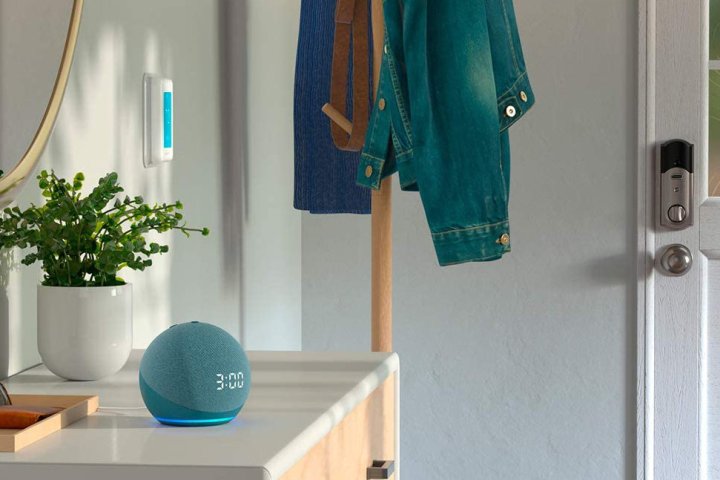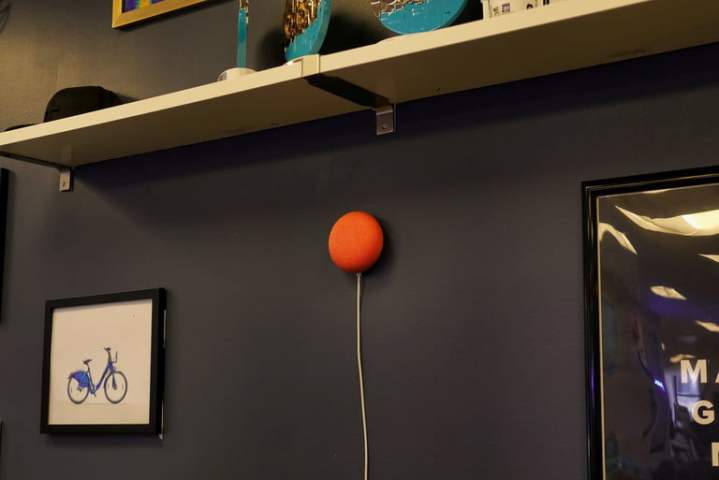Smart home devices excel at saving time and taking orders, as well as provide us with a lot more data about how our homes behave. But those capabilities are mostly focused on adults – what happens when you add kids to the mix? While some brands like to tout the ability to track or monitor your kids, it’s not always that simple.
Families quickly learn that their children can become masters at using smart home tech, but that doesn’t mean all home automation is safe for them. That’s especially true for toddlers who may not understand what smart homes can do yet.
It’s not difficult to childproof a smart home, but you do need to know the right settings and practices. Let’s take a look at the most important points.

Practice using voice assistants – and their mic muting
Voice assistants can quickly get out of hand with kids in the house, especially once children learn how they work and start experimenting. Your child may not be able to make Alexa order a puppy dog (Amazon hasn’t figured out a way to deliver those yet), but they can order a lot of other stuff, not to mention disarm your security system or play media you don’t want them to see quite yet.
Start by going over how voice assistants work with your kids. Keep them involved in the home automation process, teach them important boundaries for using smart tech, and show them how features should be used properly.
Along with this, master the mic-muting capabilities on your smart speakers. Today’s smart speakers typically have a dedicated button or method to turn off the mic so the speaker can no longer receive voice commands. That’s a good idea if you can’t supervise your kids at all times.
Look for child-safe robots
There are two common robots you find in an average smart home – vacuum robots, and lawnmower robots. Vacuum robots are largely harmless for kids. It’s important to teach children to stay out of their way and keep their fingers off, of them but they aren’t likely to cause accidents.
Robot lawnmowers are a different story. If you’re interested in a robot mower, always look for one that has child- and pet-friendly features. Usually, that means a guard around the mower blades to ensure only grass gets cut, and sensors that will cut power if the mower is lifted up.

Keep AC units, purifiers, and other devices out of reach
Smart air conditioners, purifiers, diffusers, and other devices make it easier to schedule operation, check filters, and even monitor air quality. But when kids reach the button-pressing age, buttons will get pressed, over and over again. To save the headache, and any possible injuries or spills, keep these devices on a high counter or shelf out of reach. They should be able to do their jobs just fine from there, but they’ll be out of the reach of small hands.
Robot vacuum stations are more complicated. Some stations have started to add features that disable all buttons on the docking station itself, so kids can’t give robots commands by banging on the station buttons. We expect more locking features like this on tomorrow’s smart devices, but for now, they’re relatively rare. Look for models that offer child locks for your own peace of mind.
Mount your smart speakers
Likewise, smart speakers rarely have options to turn off all the buttons. Instead, look for models that are easy to mount or a good fit for high shelves. The Nest Mini 2nd-gen, for example, is specifically designed with slots so that it can be easily mounted up a on wall where kids won’t be able to interfere with it.

Don’t interrupt sleep cycles
Sleep cycles are especially important for growing children, and the smart home shouldn’t get in the way. When setting up your routines and responses, keep sleep patterns in mind. You don’t want loud news announcements or all the lights in the house to turn on at 6 a.m. if your child is still fast asleep. You also don’t want a smart security camera turning on its spotlight right outside your kid’s bedroom whenever it sees some moving leaves, so look for cams that have reliable person detection, or make sure the motion sensor can’t control the lights.
Set passwords and app protections
No matter what smart device you have, always set up available passwords to keep them protected and make it difficult for precocious kids to operate them. If available, you may want to set individual passwords for the smart device apps on your phone, especially if your kids occasionally play with your phone as a distraction.
Editors' Recommendations
- SimpliSafe is now using AI to prevent burglars from entering your home
- Home Depot’s Hubspace is a great way to start building your smart home
- The Skylight Cal Max is a 27-inch smart calendar that might replace your smart display
- Pawport brings security (and smarts) to your existing pet door
- The Twinkly Matrix is a smart LED curtain with 500 mappable lights




